By Rick VanSickle
Shapeshifting aside for a moment, the notion that natural, or low intervention wines, are merely a fad that will pass is underestimating the enthusiasm behind and for these wines.
While we are seeing a decline in traditional, larger wineries dipping their toes into natural waters, the pure players in the category keep building their consumer base, which can’t seem to get enough of these often funky, sometimes misunderstood, raw expressions of wine made without winemaker intervention (or minimal) of any kind. And frankly, natural wines have simply gotten better across the board, and in my case, better understood.
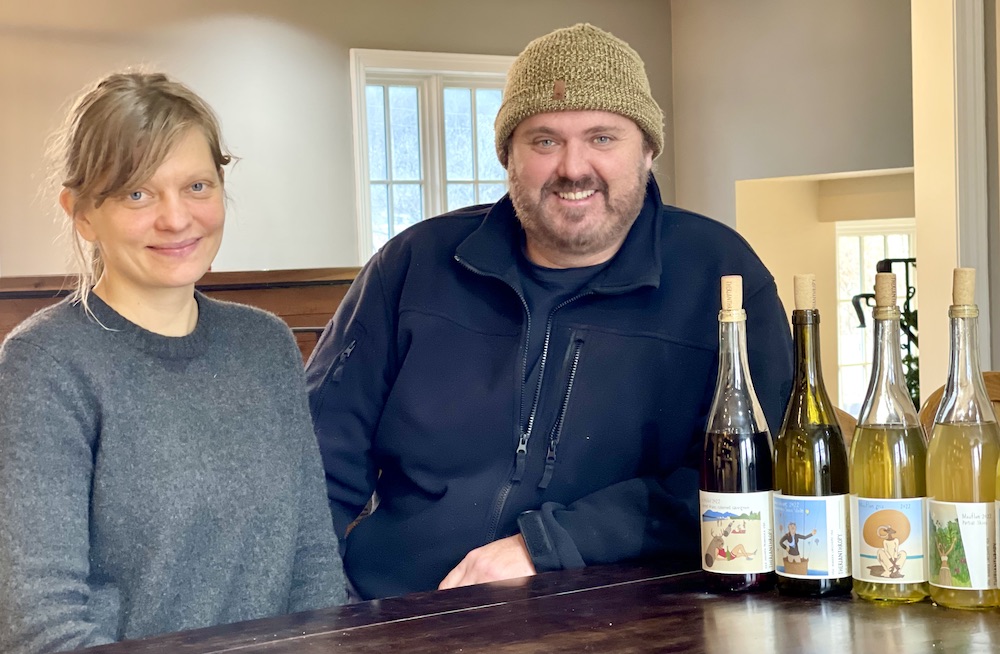
Therianthropy is a case in point. Starting with good intentions and high hopes from its quirky lineup of low intervention wines with some of the most creative labels in the business and produced in a tiny space in Creemore, the team at Therianthropy didn’t really know how it would evolve. “It started with sheer exuberance,” said Anastasia Phillips, partner and wife to winemaker David Eiberg (both above), who also didn’t know at the time where it would all lead.
I was tasting with Phillips and Eiberg in their new space at the Niagara Custom Crush Studio recently, four years after tasting the debut wines in June of 2020 in the middle of the pandemic. Count me impressed with the evolution of not only the wines, but also the progress in moving the business to Niagara under their own manufacturing and retailing licence at The Crush. Their space in the winery is a maze of concrete and ceramic eggs, oxygen-free Flexi-egg tanks, stainless steel tanks, and a handful of neutral oak barriques used only when there isn’t enough juice to fill the various eggs. Therianthropy is just in the process getting their retail space at The Crush ready for consumers to taste the wines and purchase them at their new home, likely by Feb. 1.
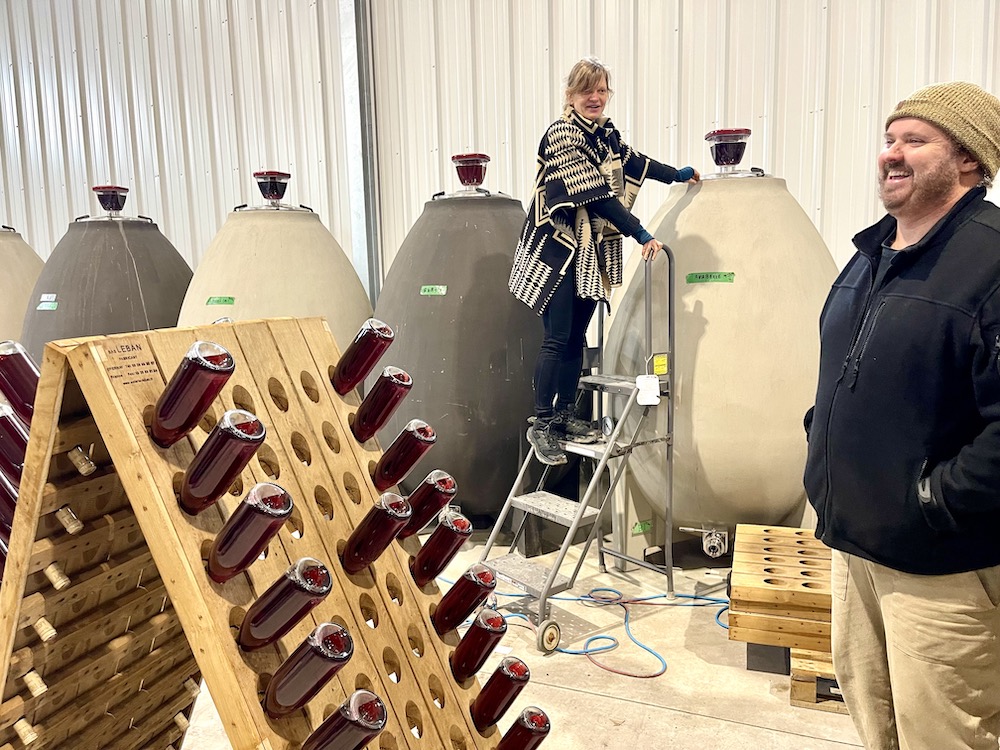
When I first tasted Eiberg’s wines in 2020 it was with mixed reviews. I was skeptical of the entire category at the time, and while I was in awe of the stories and concept behind the mythological, shape shifting creatures that adorned the bottles, the funk that came with some of the bottles was a touch too much for me, a more classically inclined, traditional wine taster and consumer.
But fast forward to 2024, and it’s a totally different story. The creatures are still there telling their stories and evoking visions of a mythical world with both fairy tales and nightmares, but the wines have morphed into something that I didn’t quite understand when I first tried them. There is a purpose to the portfolio, and a library of wines (now 19 different wines) that shows a clear path to the style Therianthropy wants to produce. For one, the brand is 100% negotiant, sourcing grapes from specific vineyards in Niagara (five sites), Georgian Bay (three sites) and Prince Edward County (one site for now). “Our focus is finding special pockets in Ontario and expressing blocks within vineyards.”
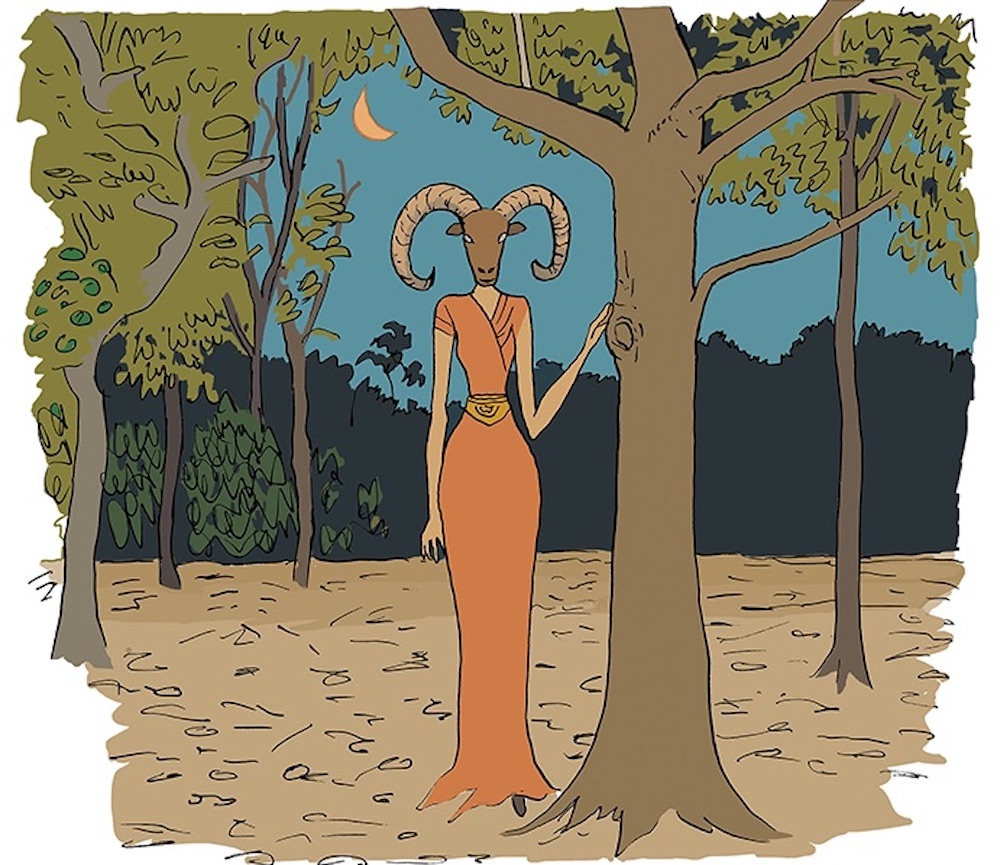
Eiberg embraces vintage variation, low intervention winemaking and is building a library of wines that he hopes will show exactly what each vintage brings to the table. You can only do that by getting out of the way of winemaking and letting nature take its course (to a degree). And he’s doing it by sourcing single-vineyard, single-block grapes from top vineyards across Ontario and applying the bare minimum of winemaking to bring out the best in those grapes in as natural a way as he can “to get the drinker as close to the fruit and terroir as possible.” Here are the key ethos in the winemaking regime at Therianthropy:
• Organically farmed site-specific grapes;
• Wild fermentations;
• Low intervention;
• Low to zero sulphite additions;
• Long elevage;
• No flavour or colour manipulation;
• All wines are fermented bone dry and all that’s left is unfermentable sugar;
• No fining or filtering;
• No new oak, and only when it’s necessary due to small quantities of fruit that don’t quite fill the various concrete, ceramic and plastic eggs and tanks primarily used for fermentations and aging;
• Moving to lightweight glass bottles.
As for low intervention/natural wines gaining or losing consumers, Eiberg said “he doesn’t believe it’s a crowded place. We sell what we make. A lot of people said it would be a fad, but it isn’t.” Eiberg added that the younger demographic is increasingly gravitating to wines like his at Therianthropy while the older demographic, well, not so much. But “I love the challenge.” Note: He was looking at me when he said that.
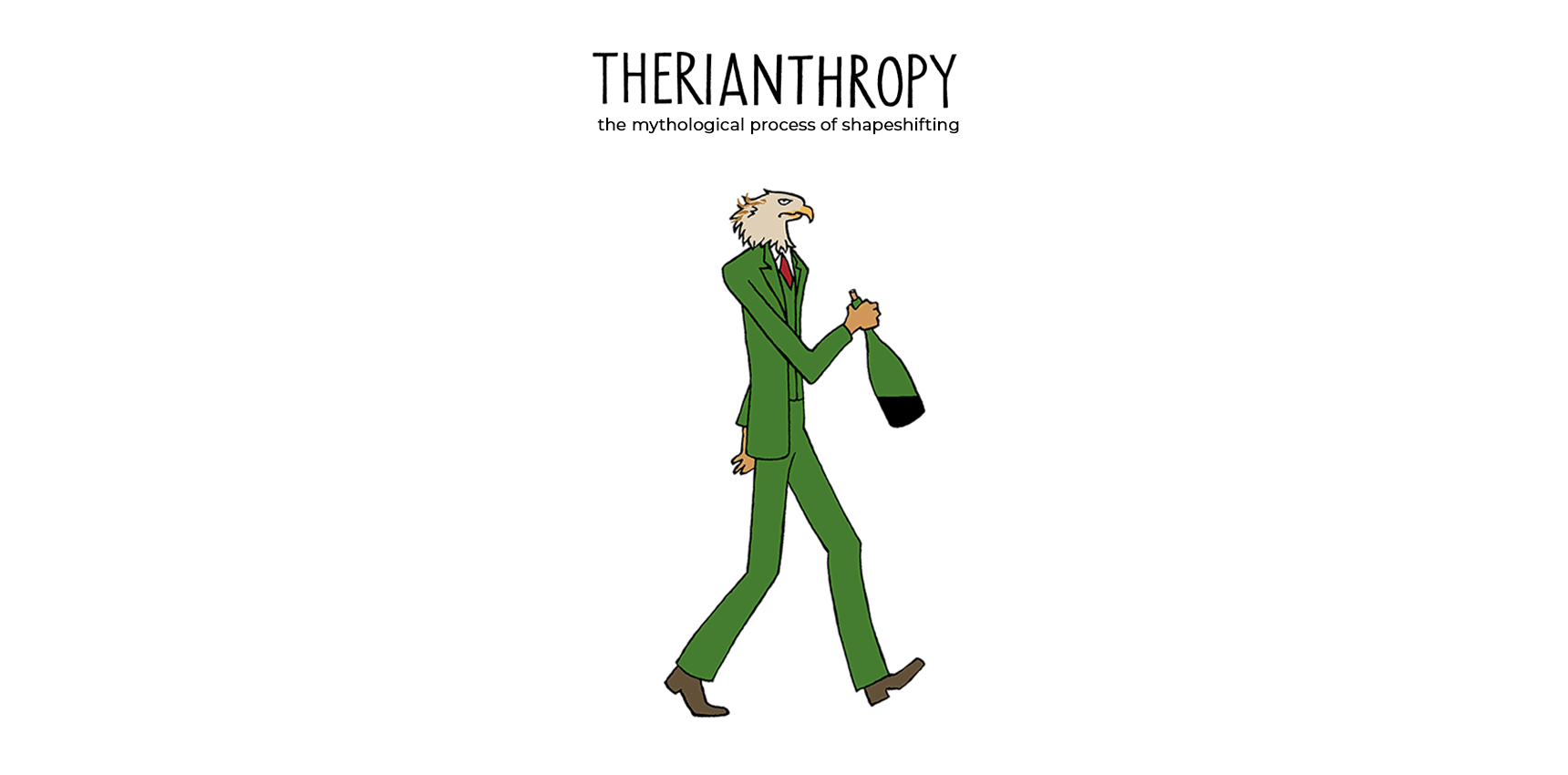
The entire concept for the labels and brilliant creativity behind them is the brainchild of Phillips, an actress with many TV and film credits. It was her vision from the very first wine produced, the David “Eagle” Gamay — based on Eiberg’s name (before it was changed to be more pronounceable in English from the original Örnberg (Swedish for Eagle Mountain) — as well as his much beloved Gamay grape. “We had the vision of a grumpy birdman, trapped in a suit, dreaming of something more — a similar situation to my previous life in investment banking,” Eiberg told Wines in Niagara in 2020.
“From that was born the idea of having, for every varietal, a character (half human/half animal — shapeshifters) that encompassed the personality of the varietal and so the next whimsical Claire de Lune was born for Riesling, and then the superhero Negotiant for Cabernet Franc, then the luxuriously self-indulgent Bonnie Viviant for Chardonnay,” he explained. “The idea of these shapeshifters representing varietals also married perfectly with the miraculous shapeshifting that grapes go through to become wine — with the help of our little yeast and lactic bacteria friends.”
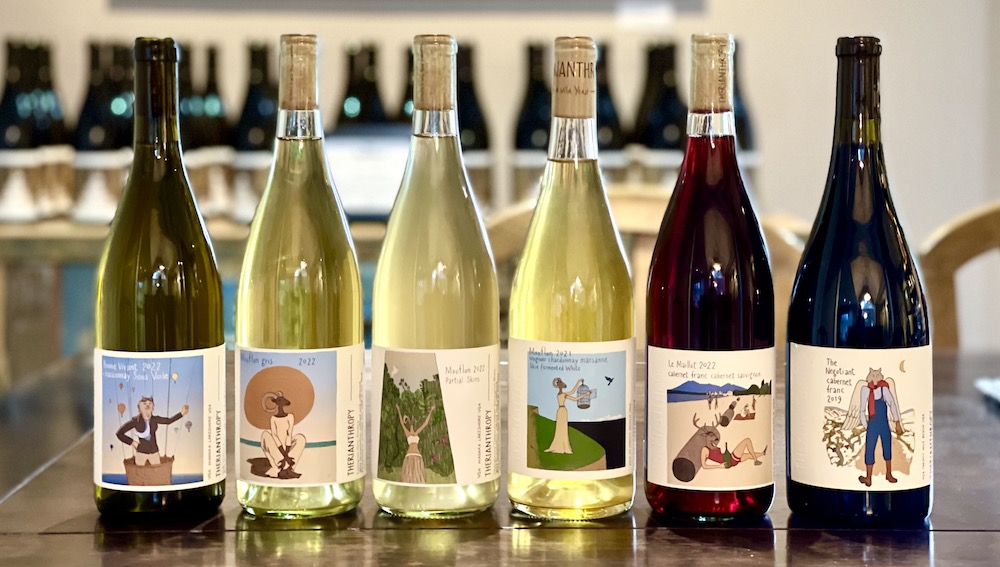
The group of individual characters representing grape varieties needed to “stable” under a winery name, “and after some long and hard thinking and searching we found the Therianthropy (the mythological ability of human beings to metamorphose into other animals by means of shapeshifting) concept and adopted the name for our winery,” said Eiberg. Parisian artist and friend, Michel Tolmer, translated all those ideas into the art you now see on the labels. “None of our team can summon more than a stickman in our drawing, so we are forever grateful to Michel for bringing our so we are forever grateful to Michel for bringing our world to life.”
All wines reviewed below, aside from the Bonnie Vivant (still deciding when to release) will soon be available at The Crush, but if you can’t wait, you can buy them online here or at bottle shops such as the two locations of Archives Wine and Spirit Merchants in St. Catharines.
I’ve also included an additional tool in the reviews below to help readers in their quest to enjoy natural/low intervention style wines because I feel there can be some misunderstanding when purchasing them without tasting them first. I’m including a five-star system, appearing at the end of the review, in addition to the traditional numeric score out of 100 points. Here’s the key, for what I call the Funk Factor:
★ = (for the rookie)
★★ = (for the curious)
★★★ = (for the engaged)
★★★★ = (for the committed fan)
★★★★★ = (all in on natural wines)
Here’s what I liked from the tasting:
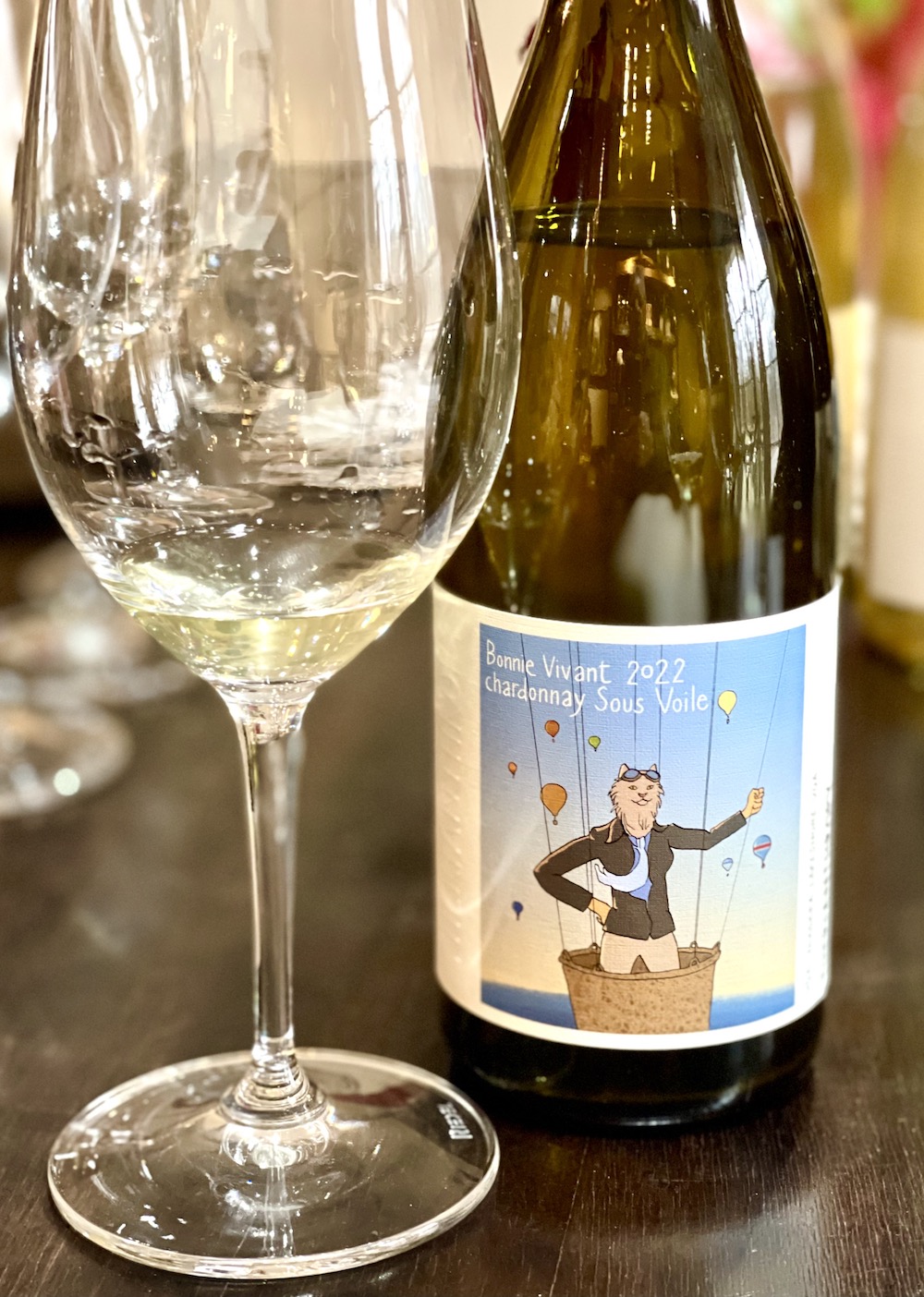
Therianthropy Bonnie Vivant Sous Voilà 2022 ($30 , February release, 92 points) — This rather unique Chardonnay is sourced from the WW (Wes Wiens) Vineyard in the Lincoln Lakeshore sub-appellation. It’s the result of a twist of fate, said Eiberg. “It accidentally developed a flor, so we decided to leave it.” The flor, a film of yeast that can develop on the surface of wine, is more common in the production of sherry, but Eiberg left it develop on this wine for three months before topping up the egg to prevent oxidation. It has a savoury, slightly reductive nose, with bruised apple, lemon curd, lanolin, pear skin and what Eiberg calls “briny, nuttiness.” It’s bright and lively on the palate with a complex array of quince, brioche, green almonds, savoury notes, lemon cream, subtle reductive accents and electric acidity keeping it all fresh and vibrant through the finish.
Funk Factor: ★★★
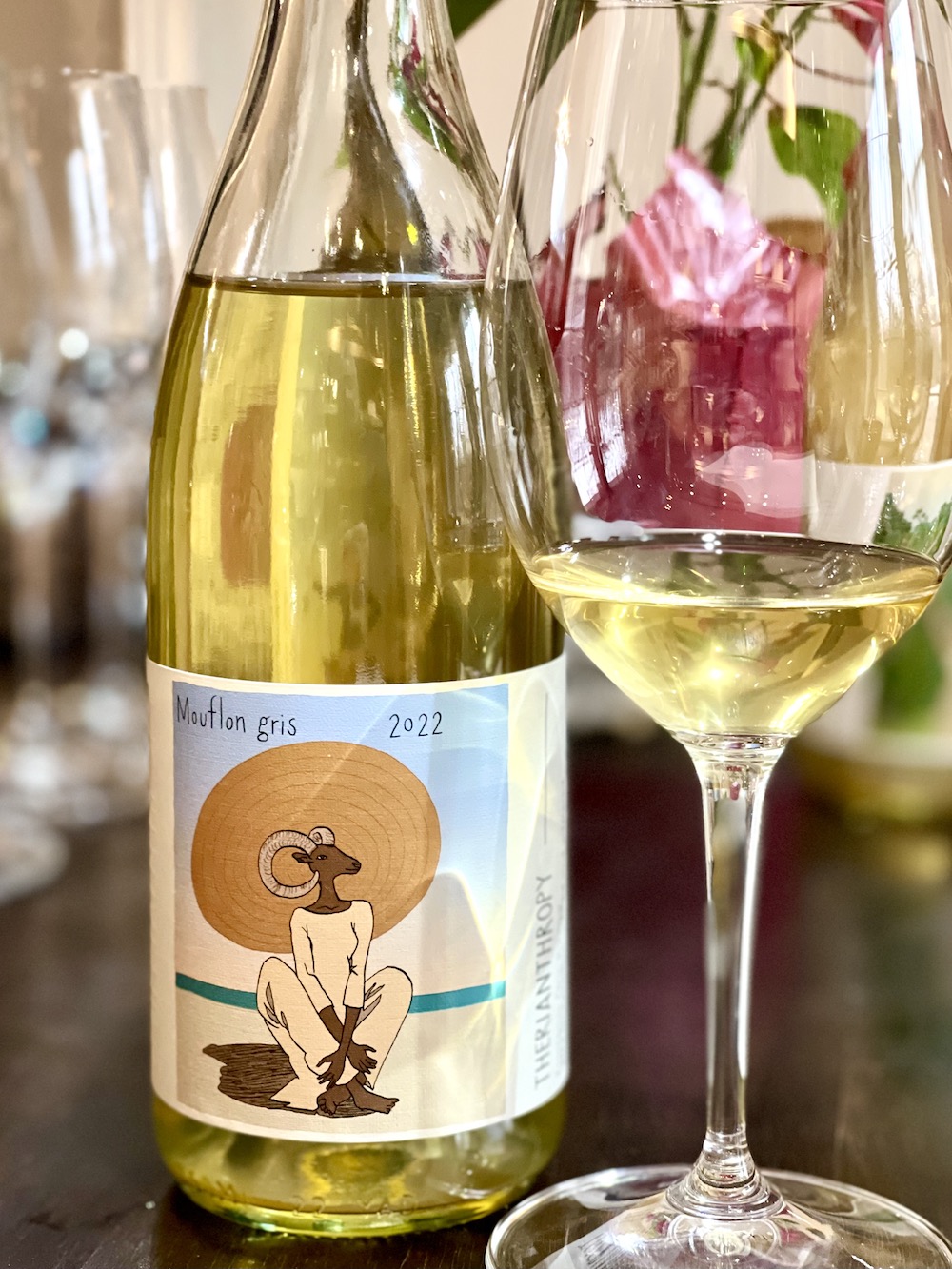
Therianthropy Mouflon Gris 2022 ($28, 91 points) — This is a carbonic-macerated blend of Frontenac Gris (80%) and Riesling (20%) that was co-fermented in an oxygen-free Flexi-egg. Primary fermentation took 12 days to complete, with six days of skin contact and six days off the skins. The Frontenac Gris was sourced from the Bock Vineyard on the St. David’s Bench and the Riesling comes from the WW Vineyard. Oddly, this is a non-VQA wine due to Frontenac Gris not being recognized as VQA worthy (Eiberg is hoping that will change soon). There’s a light copper colour in the glass and a floral/earthy nose with citrus pith, nectarine, peach tart, and subtle savoury/peppery notes. It’s tangy and bright on the palate with mouth-watering green apple, fresh-squeezed citrus, fuzzy peach and orange zest, an interesting note of fennel and all leading to a lifted, fresh finish.
Funk Factor: ★★★
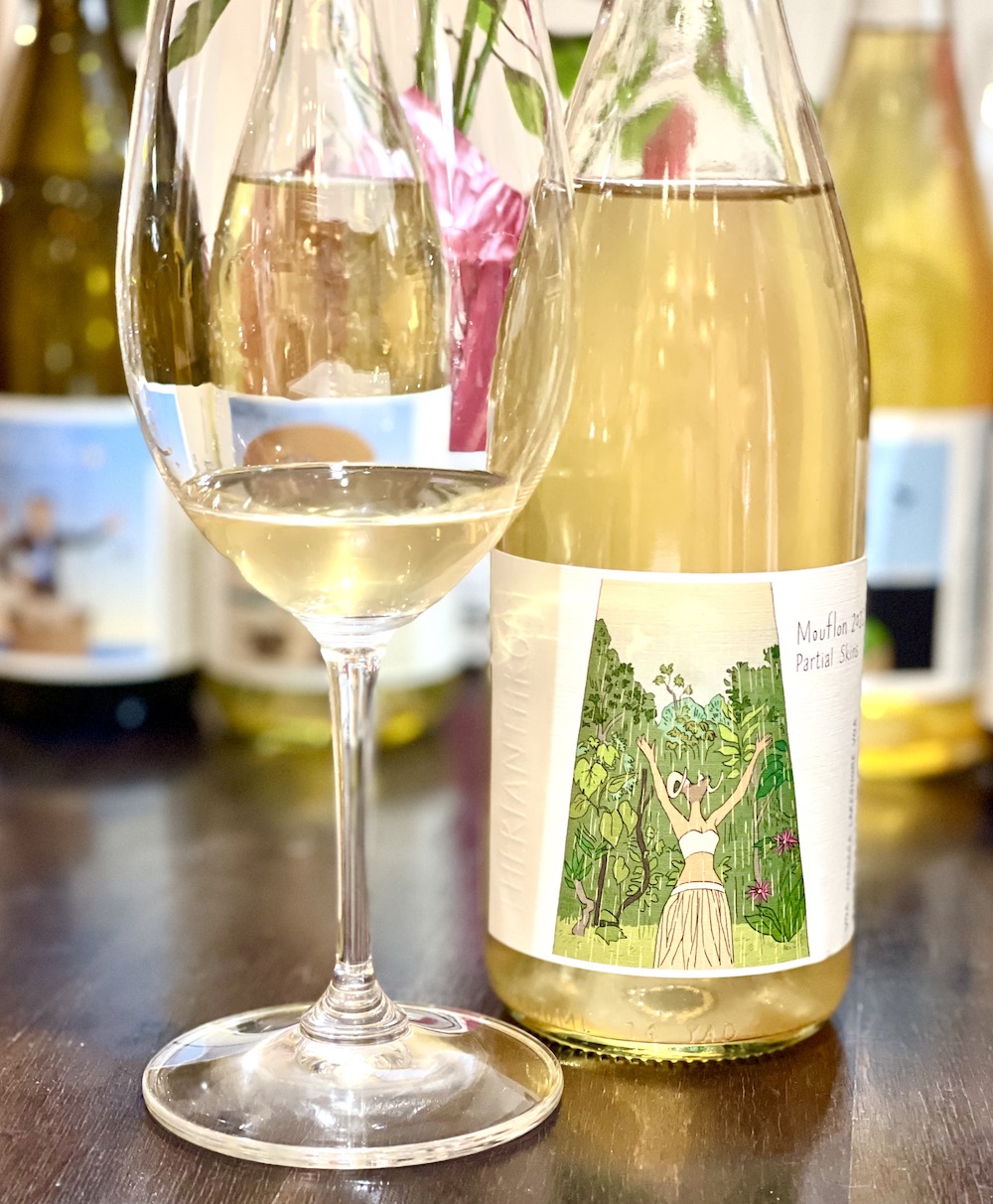
Therianthropy Mouflon Partial Skins 2020 ($28, 90 points) — The blend is 57% Chardonnay, 27% Gewürztraminer, and 16% Sauvignon Blanc all sourced from the sustainably farmed WW Vineyard. The fruit was co-fermented, whole cluster with three weeks of skin contact. After two days of cold-soaking, primary fermentation commenced spontaneously and took 21 days to complete. 100% of the wine went through malolactic fermentation, taking one month to complete. It rested in stainless steel for seven months on its fine lees (no stirring). Eiberg calls this a “gateway” low intervention orange wine for new consumers to the category. There is a cloudy, pale copper colour in the glass and an expressive floral nose with grapefruit, lychee, white pepper, ginger, a certain nuttiness, citrus marmalade, and subtle savoury notes. The palate reveals a fresh and lively mix of grapefruit, bruised apple, that lovely ginger note, lemon tart, herbs and mouth-watering acidity keeping it lifted on the finish.
Funk Factor: ★★
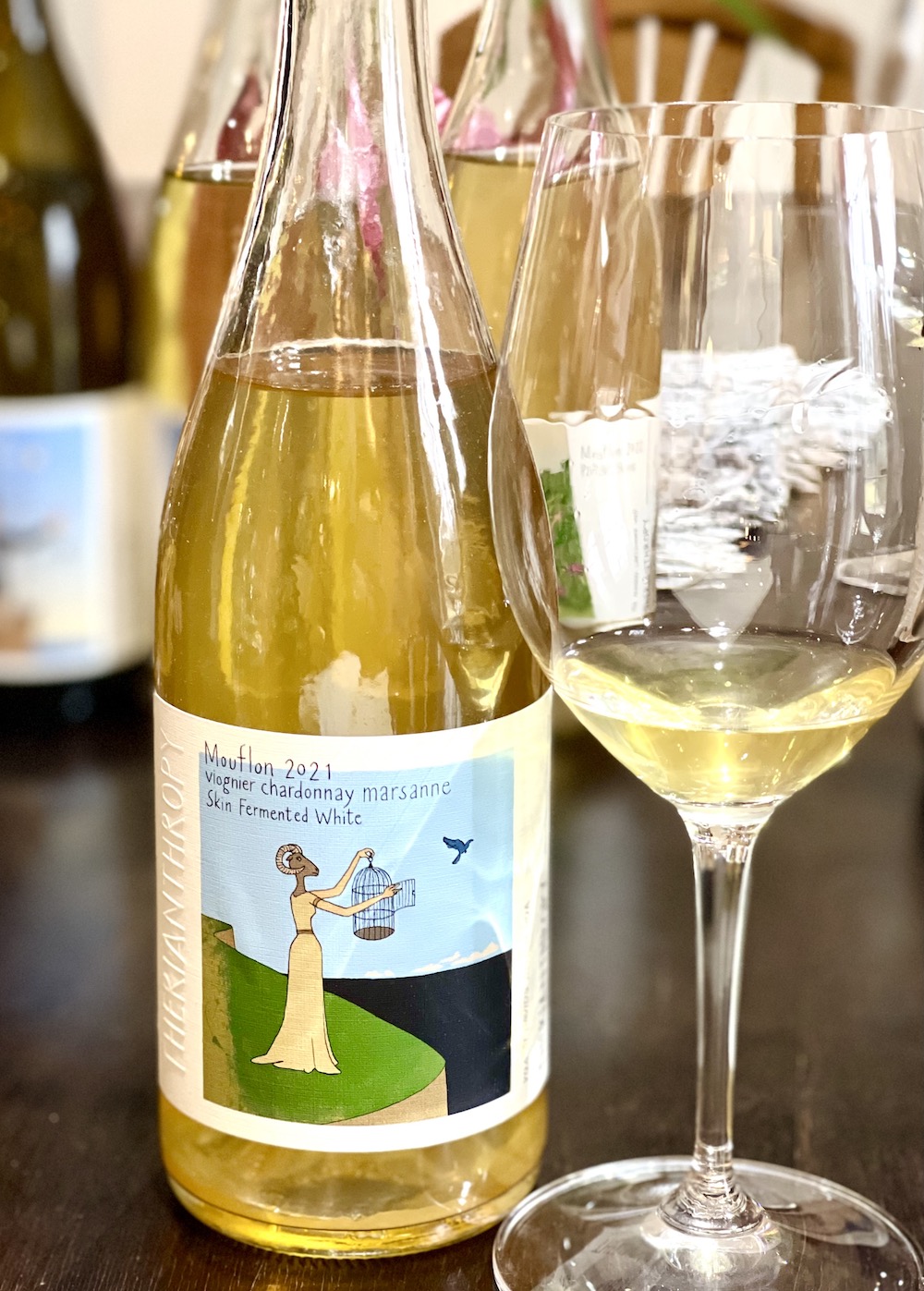
Therianthropy Mouflon Viognier Chardonnay Marsanne 2021 ($30, 91 points) — The blend for the most robustly coloured white/orange wine in this collection is 42% Viognier, 29% Marsanne and 29% Chardonnay all from the Bock Vineyard on the St. David’s Bench. It was whole cluster pressed and co-fermented into two small concrete egg vessels. It was aged in small Flexi-eggs for 6 months on the skins and stems. This takes the funk factor up a notch or two, with a floral/herbaceous nose of dried apricots, cantaloupe, oolong tea, mature peach notes, white pepper, mulled citrus and savoury/earthy notes. It’s complex and layered on the palate and reveals an ever-changing profile of stewed exotic fruits, minerally driven salinity, tea tannins, apricot tart, orange zest, minty herbs, earthy/savoury notes, and sizzling acidity on the finish.
Funk Factor: ★★★★
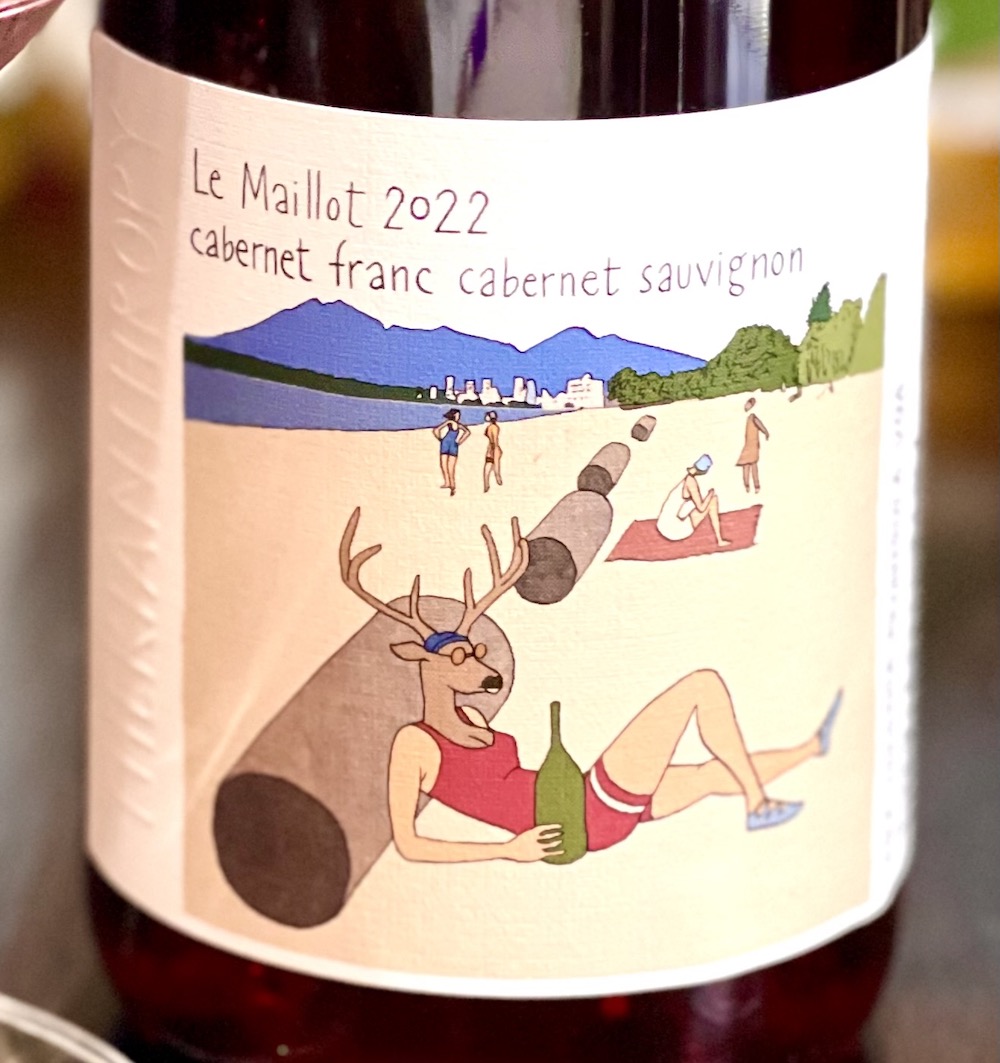
Therianthropy Le Maillot Cabernet Sauvignon Cabernet Franc 2022 ($28, 92 points) — A blend of 79% Cabernet Sauvignon and 21% Cabernet Franc sourced from the WW Vineyard and Bock Vineyard. 60% of the fruit was whole cluster fermented followed by a five-day cold soak and 22 days of primary fermentation with six days on the skins and 17 days off the skins. It was aged in a concrete egg for six months on its lees with no stirring. I’m intrigued by this label of the half-deer, half woman gently resting her head against a giant cork on beach in Vancouver with a bottle of Maillot by her side. It portrays this chill, glou-glou blend perfectly. The full carbonic maceration treatment brings out the fruity, pretty nose of bright raspberries, tart cherries and crunchy pomegranate with subtle herbs, and earthiness. It’s silky smooth on the palate with bright red berries, anise, fennel, thyme, and savoury herbs on a juicy, lifted finish. Serve with a slight chill for maximum impact.
Funk Factor: ★★★
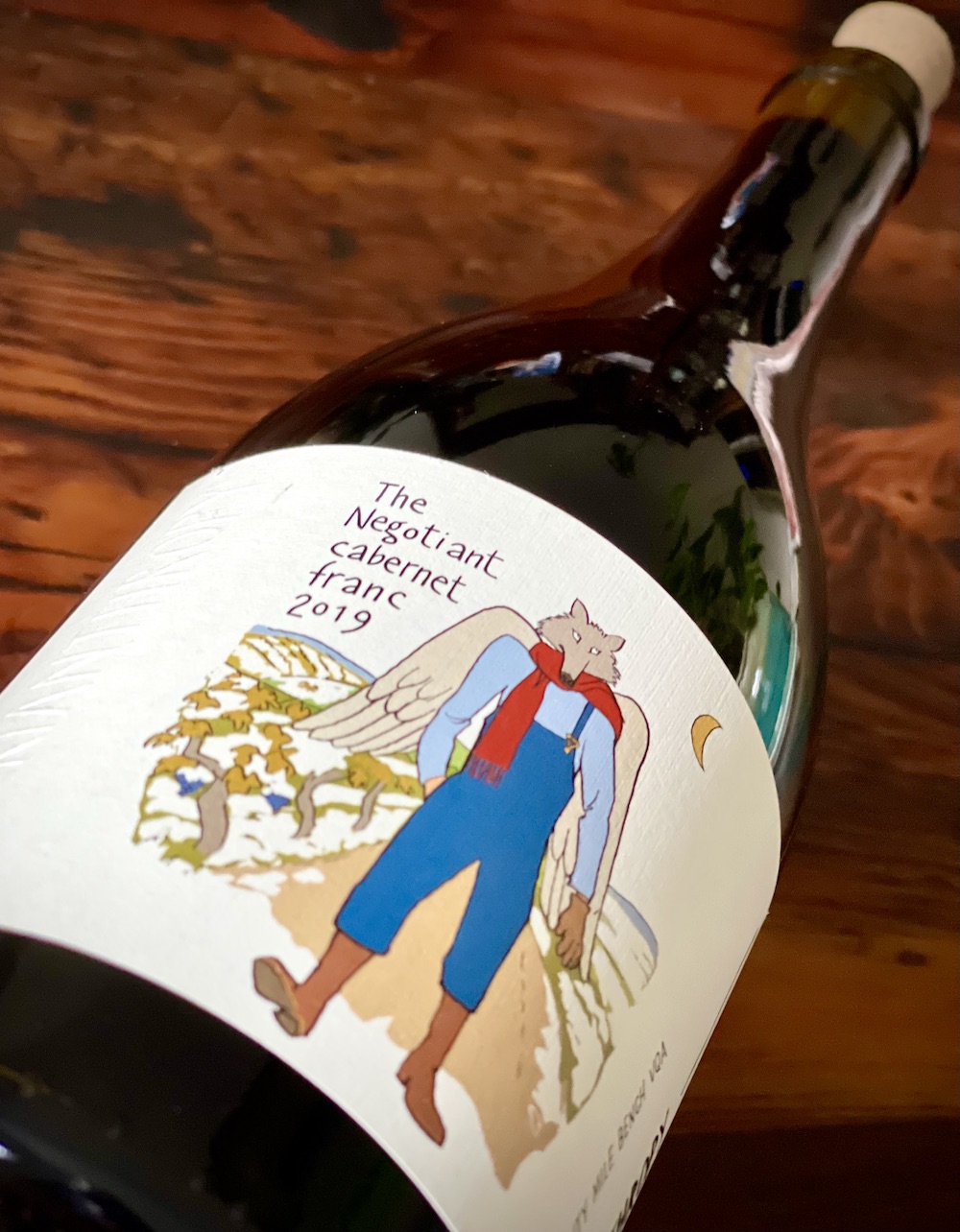
Therianthropy The Negotiant Cabernet Franc 2019 ($30, 93 points) — The first Cabernet Franc I tasted from Therianthropy was the Le Maillot 2019 way back in 2020. I was gobsmacked by the over-the-top reductive/savoury notes, which is what the 2019 delivered for whatever reason (some will contend that over spraying in a tough vintage like 2019 will partially explain those pungent notes, but it’s amplified in low intervention wines). Reduction can be used as a tool to bring complexity and amplification of the funky notes in Cabernet Franc, such as pyrazines and leafy/stemmy notes, that Franc-ophiles (and me, in moderation) love so much. But too much is too much, at least for those of us exploring on the fringes. Zoom ahead to 2024 and we have another Cabernet Franc, although made differently than the Maillot, where bottle age has all but tamed the rough reductive edges and produced this gem of a wine that will appeal to anyone smitten with the Cab Franc bug. The fruit is sourced from the Wismer Foxcroft Vineyard on the Twenty Mile Bench. It was whole cluster pressed, spent three weeks on the skins, was aged for seven months in 225L neutral French oak and then bottled aged for 30 months. “I’m going for Loire style,” admits Eiberg, and he has achieved that here. The reductive notes are muted and integrated on the nose with a lovely violet, almost perfumy lift, brambly red berries, plums, leafy tomato plant, pepper, and a lick of spice. It’s densely structured on the palate with plush tannins, earthy/savoury accents, a melange of red berries, cassis, plums, mulled herbs, a touch of smoke and spice that’s both edgy and cerebral with a juicy, lifted finish. Despite the bottle age, you can still age this for 5+ years.
Funk Factor: ★★★


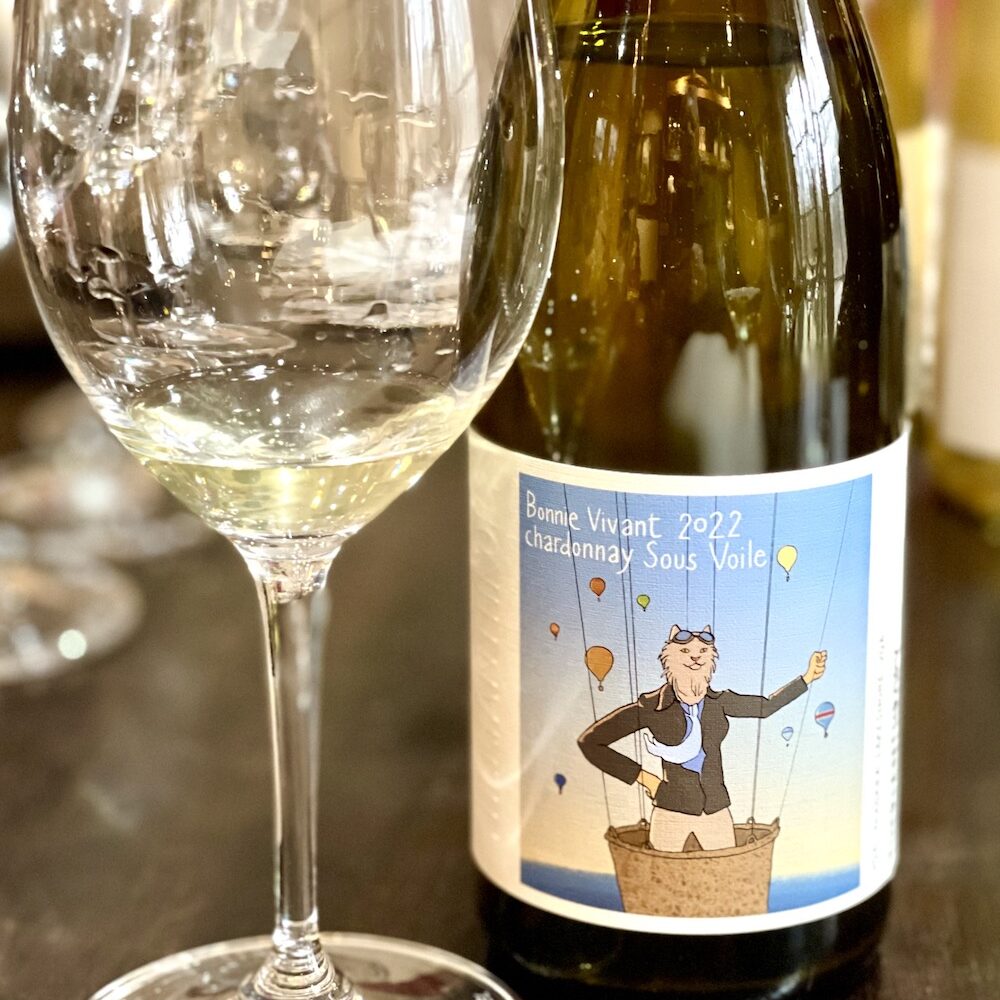




Comment here